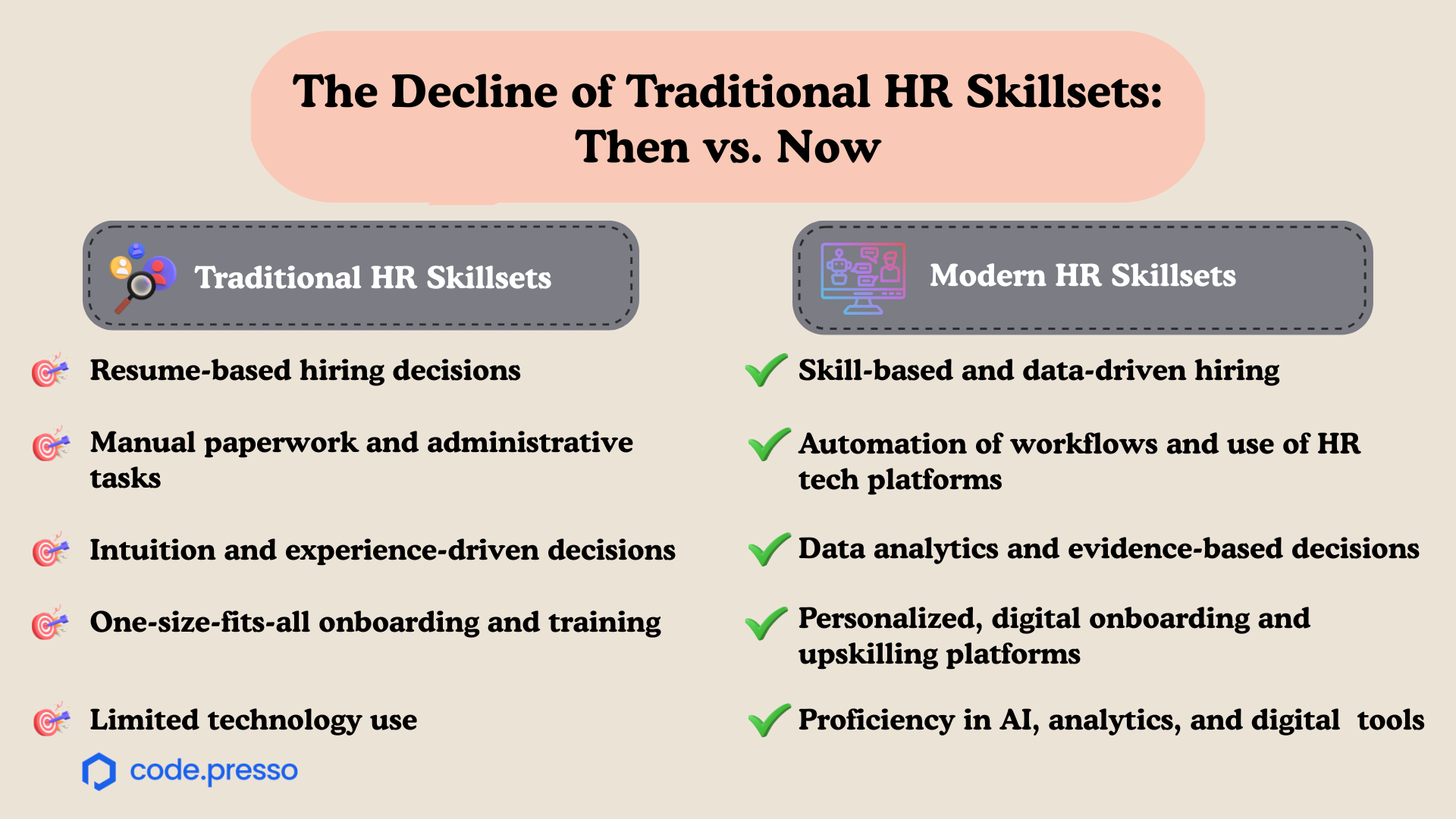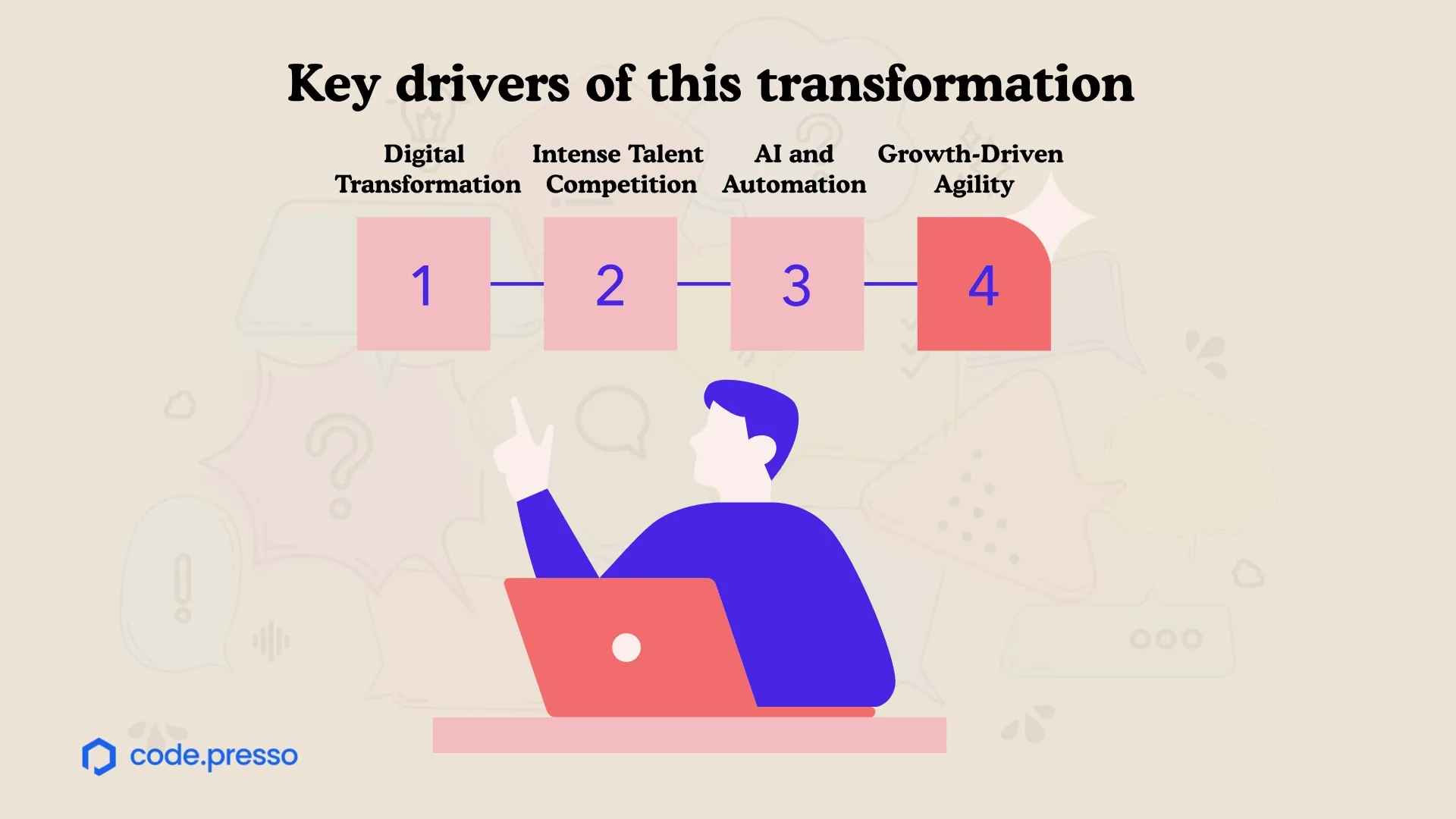Quantitative Strategy in HR: The Emerging Role of Data-Driven Leaders

Discover how data-driven HR leaders are transforming hiring, analytics, and upskilling.
1. Introduction
Human Resources is undergoing a major transformation. No longer confined to administrative tasks, today’s HR leaders are becoming strategic business enablers—leveraging data, technology, and AI to drive smarter decisions across the talent lifecycle. As organizations face rapid digital change and growing competition for top talent, the role of HR must evolve to meet new challenges with speed, insight, and precision.
In this blog, we explore how HR managers can lead with impact in the digital era—and how HR tech tools are helping redefine what’s possible in strategic workforce management.
Table of Content
- Introduction
- The Decline of Traditional HR Skillsets
- Why the Shift is Happening Now
- The Strategic HR Leader: A New Business Catalyst
- Data and Technology: HR’s New Strategic Power Duo
- Final Thought
👉Explore Codepresso’s Platform and start building a quantitative HR strategy today.
2. The Decline of Traditional HR Skillsets
The role of HR has fundamentally shifted—and with it, the skillsets required to succeed. Traditional HR relied heavily on manual processes, intuition-based hiring, and administrative efficiency. Tasks like filing resumes, coordinating interviews, and managing paperwork were once seen as core competencies.
Today, however, these are no longer enough. Modern HR demands a new set of capabilities: proficiency in data analysis, comfort with AI-powered tools, and the ability to build strategic workforce plans aligned with business goals. Instead of simply screening resumes, today’s HR professionals use skill-based assessments and predictive analytics to identify the best candidates.

3. Why the Shift is Happening Now
As HR leaders step into more strategic roles, the urgency to adopt modern tools and frameworks has never been greater. This shift isn’t happening in isolation—it’s being accelerated by powerful market and organizational forces that demand a more agile, tech-savvy, and data-literate HR function.
Key drivers of this transformation include:
- Digital Transformation: Organizations are looking to HR to lead digital initiatives that unify people, processes, and platforms across the enterprise.
- Intense Talent Competition: In today’s high-stakes talent market, timely, data-backed decisions are critical to attracting and retaining top performers.
- AI and Automation: As manual tasks are automated, HR can focus more on value-driven strategy—shaping culture, capability, and innovation.
- Growth-Driven Agility: Scaling companies need HR leaders who can rapidly adapt workforce strategies in sync with evolving business priorities.

4. The Strategic HR Leader: A New Business Catalyst
Today’s HR leaders are no longer observers of corporate strategy—they are key drivers of it. The modern HR manager operates at the intersection of technology, data, and people, building workforce strategies that are responsive, scalable, and impactful.
Core competencies of these next-generation HR leaders include:
- Proficiency in AI-driven tools and predictive analytics to anticipate workforce needs
- Utilization of real-time dashboards for continuous talent insights and performance monitoring
- Strategic collaboration with data and tech teams to build data-based hiring frameworks
5. Data and Technology: HR’s New Strategic Power Duo
The convergence of advanced data analytics and HR tech is redefining how companies attract, assess, and retain talent. With advanced HR tech tools, HR teams gain a powerful strategic advantage across the entire employee lifecycle:
- Project-Based Skills Assessments simulate real work environments to accurately evaluate digital capabilities and problem-solving skills.
- HR Analytics Dashboards provide 360-degree visibility into talent performance, enabling proactive decisions.
- Digital Onboarding Solutions create immersive, tailored experiences that drive faster integration and higher engagement.
- Workplace Fit Assessments help identify ideal cultural and behavioral matches to reduce turnover risk and foster stronger teams.
These tools elevate recruitment from a back-office function to a core business enabler, driving productivity, resilience, and long-term growth.
6. Final Thought
As the future of work continues to evolve, the most successful HR leaders will be those who embrace data, automation, and strategic foresight. The shift from transactional HR to transformative HR is not just a trend—it’s a necessity. By harnessing the power of digital tools and analytics, HR professionals can move from reactive problem-solvers to proactive business strategists.
Whether it’s refining hiring practices, boosting internal capabilities, or driving organizational agility, the tools are here—and so is the opportunity.
#HRAnalytics #HRtech #AI-driventools #data-basedhiring #DigitalTransformation #skill-based



Comments ()